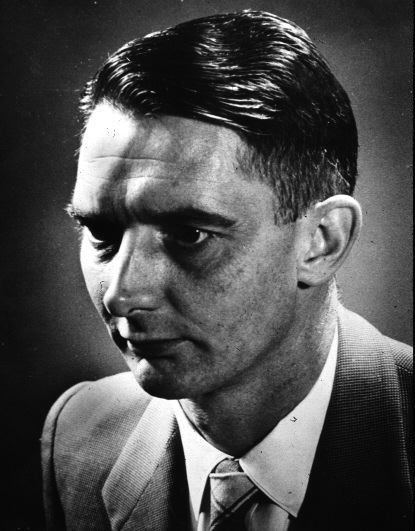Name John Bolton | Role Astronomer | |
 | ||
Died July 6, 1993, Buderim, Australia Education Trinity College, Cambridge, King Edward VII School, Sheffield Awards Gold Medal of the Royal Astronomical Society, Bruce Medal, Henry Norris Russell Lectureship | ||
This article is on the astronomer John Bolton. For other people named "John Bolton," see John Bolton (disambiguation).
Contents
John Gatenby Bolton FRS (5 June 1922 – 6 July 1993) was a British-Australian astronomer.
Biography
Born in Sheffield, England, he attended King Edward VII School (Sheffield), followed by Trinity College, Cambridge from 1940 to 1942, during which time he met C. P. Snow. After graduation he joined the navy, serving on HMS Unicorn during World War II. His ship went to Australia; he remained there after the war. In September 1946 he began working at the CSIRO Division of Radiophysics. At that time the field of radio astronomy was quite new and Bolton took the opportunity to become a pioneer in the field with experimentation at Dover Heights. His group found a number of radio sources in the sky, and realized that certain "radio stars" were actually located outside our galaxy and worked on mapping the structure of our galaxy.
In 1948 Bolton’s team identified the first known radio galaxies, or "radio stars," external galaxies that can be traced by the strong signals they emit at radio wavelengths. He established the Owens Valley Radio Observatory during a six-year stint teaching physics and astronomy at the California Institute of Technology (1955–61), but in 1961 he returned to Australia to oversee construction of the Parkes dish.
He held a fellowship at Caltech beginning in 1955. In 1956, he resigned his position at CSIRO to become Professor of Radio Astronomy at Caltech, but he returned to Australia just a few years later to help build the Parkes radio telescope. This telescope found some distant radio sources now known to be quasars. It also helped transmit the video of the first Moon landing by Neil Armstrong.
In 1962-63, under Bolton’s direction, this radio telescope played a key role in the discovery of the prototype of a family of very distant and luminous objects called quasars. Bolton later used it to pinpoint more than 8,000 extragalactic radio sources, including hundreds of quasars. In 1969 the instrument became the eye and ear of the world when it received the radio and television signals transmitted by Apollo 11 of man's first steps on the Moon. Bolton was made Commander of the Order of the British Empire in 1981.
He won the inaugural Jansky Prize in 1966, the Henry Norris Russell Lectureship in 1968, the Gold Medal of the Royal Astronomical Society in 1977 and the Bruce Medal in 1988. He was elected a Fellow of the Royal Society of London in March, 1973. Bolton is remembered by the Bolton Fellowship in radio astronomy at the CSIRO.
